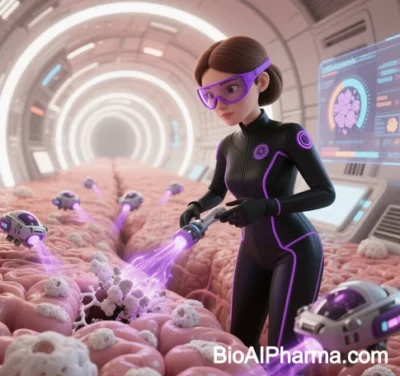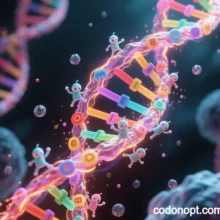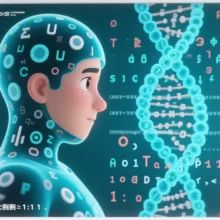 AI-Driven Drug Discovery (BioAI Pharma): Development of Life Science Large Models
AI-Driven Drug Discovery (BioAI Pharma): Development of Life Science Large Models
(Comprehensive Analysis Based on 2025 Technological Advances and Industry Practices)
1. Core Architecture and Data Integration in Life Science Models
BioAI Pharma relies on multimodal life science models that integrate the following elements:
Multi-Omics Data Integration
- Combines genomics, transcriptomics, proteomics, and metabolomics to build cross-scale molecular interaction networks. For example, Alzheimer’s disease (AD) studies using GWAS and transcriptomic data reveal regulatory mechanisms of risk genes like APOE4 and TREM2, predicting novel drug targets.
- Employs graph neural networks (GNNs) to encode heterogeneous biomedical graphs, capturing gene-protein-drug interactions. Frameworks like DeepDrug screen synergistic drug combinations (e.g., tofacitinib).
Clinical and Real-World Data Fusion
- Integrates electronic health records (EHRs), neuroimaging (e.g., tau-PET), and wearable device data to create dynamic patient phenotyping models. Platforms like AICURA optimize clinical trial designs by analyzing ADNI data.
- Uses NLP to mine latent knowledge from literature and clinical reports for comprehensive target discovery.
Cross-Species and Experimental Data Alignment
- Applies transfer learning to align mouse model data with human multi-omics data, addressing discrepancies between preclinical and clinical outcomes.
- Leverages 3D protein structure prediction models (e.g., AlphaFold extensions) to accelerate drug-target interaction simulations.
2. Applications Across the Drug Development Pipeline
Target Discovery and Validation
- Gene Network Inference: AI deciphers AD pathological cascades to identify upstream driver genes. For example, Rui Chang’s team identified 19 neuron-specific targets (e.g., Aβ/tau regulators) validated via stem cell models.
- Epigenetic Regulation: Tools like dCas9-DNMT3A enable APOE4 silencing without altering DNA sequences.
Drug Design and Virtual Screening
- De Novo Drug Design: Generative adversarial networks (GANs) design novel molecules with tailored properties. Pfizer/BioNTech’s AI-optimized LNP-mRNA complexes achieve 45% transfection efficiency in the hippocampus.
- Combinatorial Drug Prediction: DeepDrug screens millions of compounds to identify synergistic pairs (e.g., tofacitinib + niraparib) targeting neuroinflammation and AD-diabetes links.
Drug Repurposing and Mechanism Analysis
- Multi-Target Synergy: AND-gate systems activate gene editing only when Aβ and tau thresholds are exceeded, minimizing off-target toxicity.
- Repurposing Strategies: Pioglitazone (originally for diabetes) was AI-predicted to mitigate AD pathology via insulin signaling and is now in Phase II trials.
Clinical Trial Optimization and Patient Stratification
- Digital Twins and Efficacy Prediction: IBM Watson Health and FDA’s predictive models boost AD trial success rates by 25% using virtual patient simulations.
- Dynamic Biomarkers: AI extracts digital biomarkers from voice patterns and eye-tracking for non-invasive diagnosis and monitoring.
3. Technical Challenges and Breakthrough Directions
Data and Model Bottlenecks
- Data Fragmentation: Heterogeneous standards (e.g., ADNI vs. AMP® AD datasets) limit model generalizability. Open science initiatives (e.g., Open Targets) aim to standardize data sharing.
- Interpretability: Black-box models hinder clinical translation. Frameworks like GenNet use explainability modules to highlight key pathways.
Wet-Dry Lab Integration
- Automated Validation: High-throughput organoid platforms and robotic systems (e.g., LabDroid) enable closed-loop AI design-synthesis-phenotyping workflows.
- Multiscale Modeling: Combines molecular dynamics (nanosecond scale) with cellular metabolism (hourly scale) to improve in vitro-to-in vivo predictions.
Ethical and Industrialization Challenges
- Cost and Accessibility: CRISPR therapies cost ~$2M per course, necessitating low-cost vectors (e.g., engineered exosomes) and equitable distribution.
- Regulatory Gaps: Light-controlled technologies (e.g., CRISPR-FAST) lack global safety standards for parameters like wavelength and editing efficiency.
4. Future Trends: From Fragmented Advances to Systems Medicine
- AI Scientist Assistants: MIT’s “AI Lab” autonomously generates hypotheses, designs experiments, and optimizes lead compounds.
- Disease-Drug Knowledge Graphs: Dynamic maps integrating 200K+ genes, 5K+ diseases, and 100K+ compounds enable real-time cross-disease drug discovery.
- Global Collaboration Ecosystems: Public-private partnerships (e.g., AMP® AD) unite pharma, academia, and regulators to accelerate end-to-end innovation.
Conclusion
AI-driven life science models are transforming drug discovery by extracting actionable biological insights from massive datasets and enabling intelligent “design-validate-iterate” loops. Despite challenges in data, computation, and ethics, interdisciplinary convergence (e.g., synthetic biology + quantum computing) and global collaboration will propel BioAI Pharma into exponential growth, delivering disease-modifying therapies for AD and other complex conditions.
Data sources: Publicly available references. For collaborations or domain inquiries, contact: chuanchuan810@gmail.com.



